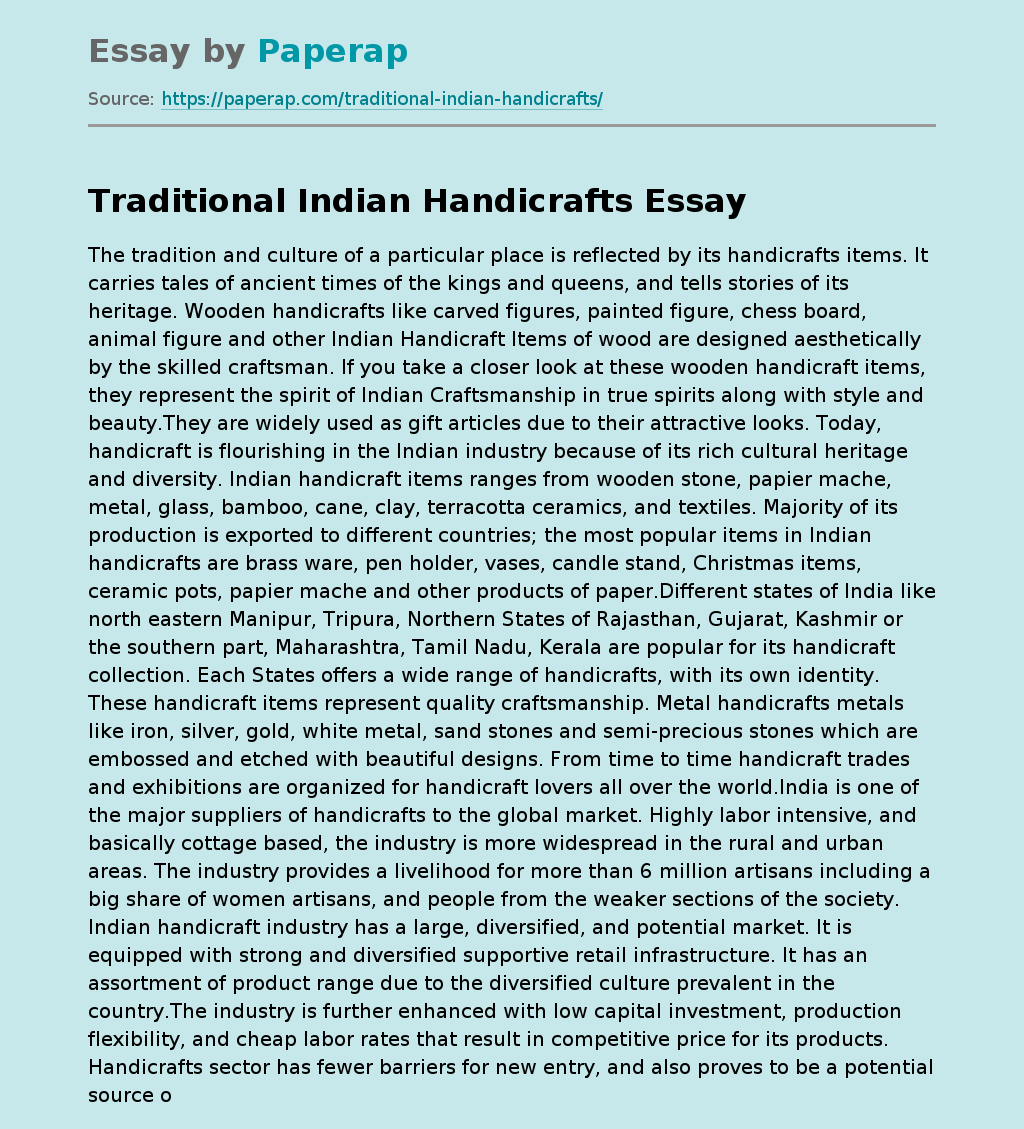Traditional Indian Handicrafts
The tradition and culture of a particular place is reflected by its handicrafts items. It carries tales of ancient times of the kings and queens, and tells stories of its heritage. Wooden handicrafts like carved figures, painted figure, chess board, animal figure and other Indian Handicraft Items of wood are designed aesthetically by the skilled craftsman. If you take a closer look at these wooden handicraft items, they represent the spirit of Indian Craftsmanship in true spirits along with style and beauty.
They are widely used as gift articles due to their attractive looks. Today, handicraft is flourishing in the Indian industry because of its rich cultural heritage and diversity. Indian handicraft items ranges from wooden stone, papier mache, metal, glass, bamboo, cane, clay, terracotta ceramics, and textiles. Majority of its production is exported to different countries; the most popular items in Indian handicrafts are brass ware, pen holder, vases, candle stand, Christmas items, ceramic pots, papier mache and other products of paper.
Different states of India like north eastern Manipur, Tripura, Northern States of Rajasthan, Gujarat, Kashmir or the southern part, Maharashtra, Tamil Nadu, Kerala are popular for its handicraft collection. Each States offers a wide range of handicrafts, with its own identity. These handicraft items represent quality craftsmanship. Metal handicrafts metals like iron, silver, gold, white metal, sand stones and semi-precious stones which are embossed and etched with beautiful designs. From time to time handicraft trades and exhibitions are organized for handicraft lovers all over the world.India is one of the major suppliers of handicrafts to the global market.
Highly labor intensive, and basically cottage based, the industry is more widespread in the rural and urban areas. The industry provides a livelihood for more than 6 million artisans including a big share of women artisans, and people from the weaker sections of the society. Indian handicraft industry has a large, diversified, and potential market. It is equipped with strong and diversified supportive retail infrastructure. It has an assortment of product range due to the diversified culture prevalent in the country.The industry is further enhanced with low capital investment, production flexibility, and cheap labor rates that result in competitive price for its products. Handicrafts sector has fewer barriers for new entry, and also proves to be a potential source of employment. Despite of all the technological advancements happening globally, there is still a lack of awareness about it in this sector. The artisans do not have awareness about the new technologies. They do not get adequate details about the current market trends. Furthermore; they lack information regarding international requirements and market scenario.Hence they are not able to commercialize their skills in the right way. Though Indian made handicraft items have a healthy demand in the global market, lack of adequate infrastructure and communication facilities hinder the marketing activities. Moreover, there is very less co-ordination among government bodies, and private players. They sector still remains under nourished with young people not much interested in this craftsmanship. The industry is confined to small cities and rural areas with the market remaining untapped.The main products that are manufactured by the rural handicrafts industry of India are as follows – Art metal wares Wood wares Hand printed & textiles & scarves Embroidered & crocheted goods Shawls as art wares Zari and Zari goods Imitation jewelry Miscellaneous handicrafts Presently, the global market of handicraft is valued at US$ 400 billion and India’s share in the global market stands at 2% only. However, the handicraft industries in rural India economy registered an annual growth rate of 15% consistently over the last decade and it is estimated to grow at the rate of 42% over the next five years annually.Although, the Handicraft Industries in Rural India Economy is witnessing steady growth over the last five years but its growth is plagued by certain bottlenecks, like the following – The manufacturing process does not compliments with orders of such products Use of primitive techniques High manufacturing cost Poor quality of products Product design and development to be aligned with the background and history of the craft, the producer and the market requirements Poor standard of raw materials Lack of standardized vendor and suppliers Lack of standardized raw materials Improper pricing of finished productsAbsence of proper incentives and schemes by the Government of India Unorganized investment patterns and lack of regular investors Lack of proper marketi8ng channels Poor access to urban markets
Traditional Indian Handicrafts. (2019, Dec 05). Retrieved from https://paperap.com/traditional-indian-handicrafts/

